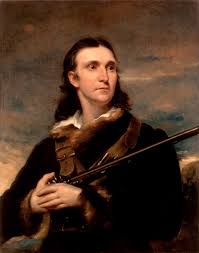 In the late 1800’s bird feathers, and especially plumes, were literally worth more than gold. The feather trade was active, supplying plumes and even whole birds as hat decorations. Egret colonies were decimated, the adults stripped of plumes while the nestlings starved.
In the late 1800’s bird feathers, and especially plumes, were literally worth more than gold. The feather trade was active, supplying plumes and even whole birds as hat decorations. Egret colonies were decimated, the adults stripped of plumes while the nestlings starved.
“When the Audubon Society first formed in 1886, plume hunters were decimating North American bird populations in the name of fashion. Ladies trimmed their hats and clothing with birds’ exotic feathers. Shorebirds and migratory birds that stayed near the water suffered the most as hunters targeted large flocks, injuring animals indiscriminately and orphaning chicks.
George Bird Grinnell, the Audubon Society’s founder, was an atypical animal activist. He ran “Forest and Stream,” a hunting and fishing journal, and enjoyed quarrying big game. But the unmitigated slaughter of birds for their feathers disturbed even the most avid hunters. Grinnell began publishing pieces against plume hunting in his magazine. His enthusiasm soon drove him to produce an independent pamphlet, entitled “Audubon Magazine,” in honor of the illustrator John James Audubon. Although Grinnell had not known Audubon, he had attended the day school of the artist’s widow and wandered among his artifacts.
Eight years later, socialite Harriet Hemenway decided to take her own stand against the still-rampant practice of plume hunting. She and a cousin scoured the Boston Blue Book, an index of the city’s elite, marking names of fashionable women who dressed in plumes and inviting them to join a society for the protection of birds. Hemenway united the ladies with naturalists and people interested in ornithology; the group called itself the Massachusetts Audubon Society.
By the turn of the century, the society had expanded across the country, unified under a national committee and encouraged federal and state legislation against plume hunting. The Audubon Society helped create the first Federal Bird Reservation which ultimately led to the formation of the National Wildlife Refuge System.” From How Stuff Works.”
“John James Audubon (1785-1851) was not the first person to attempt to paint and describe all the birds of America (Alexander Wilson has that distinction), but for half a century he was the young country’s dominant wildlife artist. His seminal Birds of America, a collection of 435 life-size prints, quickly eclipsed Wilson’s work and is still a standard against which 20th and 21st century bird artists, such as Roger Tory Peterson and David Sibley, are measured.

Although Audubon had no role in the organization that bears his name, there is a connection: George Bird Grinnell was tutored by Lucy Audubon, John James’s widow. Knowing Audubon’s reputation, Grinnell chose his name as the inspiration for the organization’s earliest work to protect birds and their habitats. Today, the name Audubon remains synonymous with birds and bird conservation the world over.” (From the Audubon Society.)
In 1934, with membership at a low of 3,500, and with the nation in the throes of the Great Depression, John H. Baker became the NAS president. Baker, a World War I aviator and ardent bird lover, was also a businessman, and he set about to invigorate the society and bolster its budget prosperity through publication. Baker’s innovation was to begin publishing book-length descriptive and illustrated field guides on major forms of bird and mammal life. Soon, in association with New York publisher Alfred A. Knopf, the Audubon Field Guides became a staple of every artist’s and environmentalist’s library. Today, many Audubon field guides have been adapted for mobile phone apps.[3] This field guide series covers a wide range of nature-related topics, including rocks and minerals, wildflowers, the night sky, and many animals.This series has sold 18 million copies and uses photographs instead of the commissioned paintings or other drawings that many other field guides possess, such as the Peterson Field Guides.
I don’t say enough in my blogs about our local Audubon Society, Altacal Audubon. A group of people interested in birds and conservation in general who meet monthly and offer many field trips. This is a great way to learn birds – go with experienced birds, who, by the way, are really nice people.